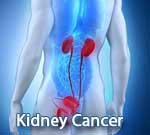New Breast Cancer Surgery Techniques
Oncoplastic surgery is a relatively new practice of breast cancer surgery, combining oncology principles with plastic surgery techniques. Based on the stage of their cancer, women with breast cancer usually must choose between a mastectomy (removal of the entire breast) and lumpectomy (removal of just the tumor from the breast). With mastectomy, a woman can have reconstructive breast surgery. With the breast conserving lumpectomy, a woman is often left with an unsightly scar and depressed breast cavity. Oncoplasty breast surgery involves completely removing the tumor but also gently reshaping the breast with the remaining tissue so that women have the best possible cosmetic outcome from their initial breast cancer surgery.
Although still a fairly rare specialty, there are more and more of us getting this specialized training. Another new type of breast cancer surgery that’s exciting is nipple-sparing mastectomy. We have a clinical study currently underway. It is for women who have breast cancer that does not involve the nipple. It can be done for a single or double mastectomy. It involves taking out the breast tissue - the dangerous part - but leaving behind the entire shell of skin, areola and nipple. Then we replace that breast tissue with tissue from another part of the body, such as the abdomen, or with an implant. This new surgery offers a beautiful result, retaining the central feature of a woman's breast. It's not as disfiguring or psychologically unpleasant as a conventional mastectomy. We're still monitoring the results for women who've had this new surgery, to see if and how many have a recurrence, but we are very optimistic about the long term outcomes.
No matter what type of surgery is indicated, the most important factor in successful treatment for breast cancer is early detection. The more advanced the breast cancer, the harder it is to treat effectively. Women over the age of 40 should have a mammogram annually in addition to a regular breast exam with their doctor. On average, mammography will detect about 80 to 90 percent of breast cancers in women who have no symptoms.





































